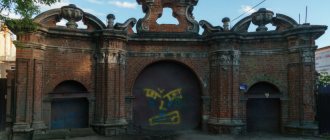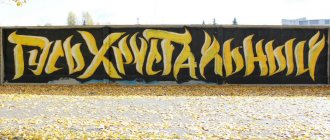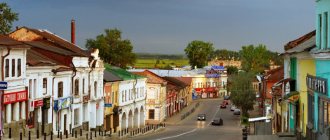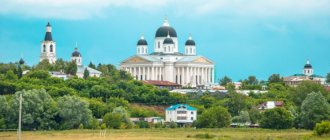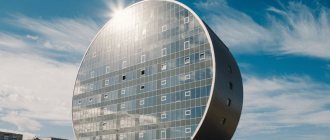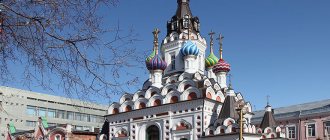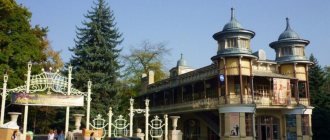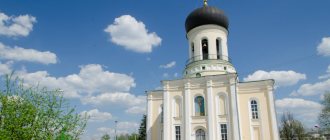About the city
The naval port city of Kronstadt is located in the Gulf of Finland, on the island of Kotlin. This is the most remote and most interesting suburb of St. Petersburg. Its history began in 1704 with the creation of Fort Kronshlot by Per the Great to conduct the Northern War and further protect St. Petersburg. The city remained closed until 1996, but is now open to visitors and excursions.
Today, just over 44,000 people live here. Most of the population is employed in the regional center, while the rest work at the Marine Plant, a clothing factory and a textile enterprise.
The climate of the city is moderate, humid, changing from continental to maritime. In general, the weather conditions in Kronstadt are the same as in St. Petersburg, although in summer the air temperature is lower and the winds are somewhat stronger.
A dam built in 1984 leads to the city. It conventionally divides the settlement into two parts – eastern and western.
This is the City of Military Glory, the entire historical center of which is included in the UNESCO World Heritage List.
Kronstadt occupies a very small territory, so you can explore it on your own using a map and guidebook. There are a lot of interesting and historically significant places here, so the question “What to see?” definitely won't happen.
Sights with photos and descriptions
You can travel around Kronstadt by car or take a walk around it - visiting the port will take less than one day.
This is an amazing, incredibly beautiful city with a strict layout, an impressive and at the same time ceremonial appearance. Below is a description of its most popular and spectacular attractions.
Anchor Square
Home in Kronstadt. It has the shape of a triangle and is paved with an anchor pattern.
It is limited by the main buildings of the city - St. Nicholas Cathedral, the Admiralty and Petrovsky Dock. Its “highlight” is the only cast iron pavement in the country.
Naval St. Nicholas Cathedral
A visit to the cathedral should definitely be included in your travel itinerary. The incredibly beautiful building in the neo-Byzantine style was erected from 1903 to 1913. This is one of the main attractions of the city, dedicated to all the lost sailors, their courage and courage.
- Address: Yakornaya Square, 1.
- Opening hours: daily, from 10:00 to 19:00.
- Free admission.
Fort "Emperor Alexander 1" ("Plague")
It is interesting because it is very similar to Bayard from the famous TV show . Date of construction: 1845.
For many years - from 1896 to 1917, it was used as a laboratory for the study and fight against diseases: plague, typhus, cholera, from which the building received its second name.
- Located south of Kotlin.
- Opening hours: from 11:00 to 20:00, for organized groups.
- Cost of the excursion: about 1000 rubles.
Fort "Kronshlot" ("Kronshloss")
The first in the city, it was built in 1704 - it was from here that the history of Kronstadt began.
The fort coped well with its defensive function, but it was modernized several times: the last one in the second half of the 19th century. This is a sensitive facility, so you won’t be able to enter its territory; only external inspection is available.
Forts "Totleben" and "Obruchev"
The first was founded in 1898, the second in 1896. Both belong to the northern chain of fortifications.
“Obruchev” is the largest of all St. Petersburg ones, “Totleben” is in excellent preservation. You can get to each one as part of a guided tour.
Fort "Constantine"
The construction of the impregnable fortress began back in 1808, and the last changes to its design were completed only in 1901.
The building has a rich, rich history, and today is a large historical and architectural complex where a yacht club and port are open.
- Tours of the area are offered daily.
- Entrance fee: 100 rubles.
- Cost of the excursion: 1000 rubles.
Italian Palace
The magnificent building in the classicist style appeared in 1717. It was the official residence of Peter the Great, one of A. Menshikov’s palaces, then a navigator’s school, a cadet corps, and a college.
Unfortunately, the original appearance of the building has not been preserved: it was constantly rebuilt and improved, and at the beginning of the 20th century there was a severe fire here. Today the building belongs to the Naval Museum.
Address: Makarovskaya str., 3.
Cathedral of the Vladimir Icon of the Mother of God
The date of its first appearance is 1782. Over its long history, the temple was rebuilt and destroyed several times.
The style of construction is neo-Byzantine with neo-Russian elements, and the layout of the interior space is similar to early Christian basilicas.
- Address: st. Vladimirskaya, 32.
- Opening hours: daily, from 09:00 to 20:00.
Tolbukhin lighthouse
One of the most ancient lighthouses in Russia, erected on an artificial island in 1719 by order and personal drawing of Peter the Great. Initially the building was wooden, it became stone in 1810.
A pier appeared here in 1970. The lighthouse is still in operation.
- You can visit it as part of an excursion at any time of the year.
- The opening hours of the attraction depend on the tour time; you will not be able to go inside on your own.
Perovsky Park
It appeared thanks to F.F. Bellingshausen, who in 1839 decided to plant a garden here. The main alley of the square is decorated with a monument to Peter, erected in 1846.
There are no playgrounds, cafes or attractions here - this is a place for a leisurely walk along the embankment or wide, shady alleys.
- Occupies territory on Makarovskaya Street.
- Open daily and around the clock.
Summer garden
The main alley is the remains of the first street of the city called Petrovskaya Perspective, where Peter’s house and a small garden were located.
In 1828, I. I. Charlemagne began the reconstruction of the park.
On the territory of the garden there are several interesting monuments - midshipman Domashenko, the clipper Oprichnik, John Paul Jones, as well as an oak tree planted by Admiral Makarov.
- Located near Krasnaya and Petrovskaya streets.
- Open daily and around the clock.
Petrovsky dock
The first dry dock. It took 35 years to build - from 1719 to 1752, and the author of the project was Peter the Great himself.
The building has been perfectly preserved, although it has been abandoned for many years without any restoration.
You can enter the territory of the historical monument absolutely freely.
Museum of the History of Kronstadt
Occupies two buildings.
In the first one , Yakornaya Square, 2a, there is an exhibition dedicated to the history of the city, its way of life, its citizens and traditions.
In the second - st. Leningradskaya, 2, there is an exhibition “Secrets of Sunken Ships”, which contains objects found during the exploration of the seabed.
- Opening hours: the museum on Anchor Square is open daily in summer from 11:00 to 18:00, in spring, autumn and winter, Wednesdays are a day off.
- The museum on Leningradskaya Street is open from 09:00 to 18:00 on weekdays, and from 11:00 to 18:00 on weekends.
- Entrance fee: 150 rub.
Kronstadt Maritime Museum
Located in the house of the founder of a private diving school.
Tourists will see diving suits, historical documents, artifacts, and also learn about the difficult descent to the seabed and the technologies used in this matter.
- Address: st. Andreevskaya, 5.
- Opening hours: open on Wednesdays, Fridays, Saturdays and Sundays from 11:00 to 18:00.
- Free admission.
Memorial Museum of A. S. Popov
Located in the Italian Palace.
There is an extensive collection of scientific instruments, as well as documents and things related to the famous physicist and radio inventor Alexander Stepanovich Popov.
- The time of the excursion should be agreed upon with the museum staff.
- Free admission.
Museum of St. John of Kronstadt
Dedicated to the life of public figure, guide, priest and author of spiritual texts, John of Kronstadt (1829-1908). This is a small room-cell, at the same time a sleeping place and a working office of the saint, where the pilgrimage service functions.
- Address: st. Posadskaya, 21.
- Opening hours: Monday to Sunday, 12:00 to 17:00.
- Free admission.
Museum of the Kronstadt Marine Plant
Occupies premises in the House of Culture named after M. I. Martynov.
The museum's collection includes ships produced by the plant in different periods of time, as well as archival documents, photographs and equipment elements.
- Address: Lenin Avenue, 39.
- Works on preliminary requests.
- Free admission.
Footstock
One of the oldest on Earth - opened in 1840. It is considered the standard for determining zero altitude.
The footrod pavilion is located near the Blue Bridge, not far from Petrovsky Park.
Makarovsky Bridge
It is thrown across the Petrovsky ravine, connecting Krasnaya Street and Yakornaya Square.
It is an architectural and historical monument, erected in 1913. They say that it was built in 1913 specifically to shorten the road for Tsar Nicholas 2 from one end of the city to the other.
Another legend says that the Bolsheviks threw soldiers off it during the Kronstadt uprising.
Gostiny Dvor
The building, decorated with a colonnade, was built in the classicist style in the 19th century. Previously, in its place there were chaotic shopping arcades, but in 1827 Nicholas 1 ordered the construction of a specialized building in their place.
During its existence, it has undergone many changes, but still remains a magnificent architectural monument. Inside there are many souvenir shops and shops.
- Address: Lenina Avenue, 16a.
- Opening hours: on weekdays – from 10:00 to 20:00, on weekends – from 11:00 to 19:00.
Chapel of the Epiphany "Savior on Water"
Appeared in Kronstadt at the beginning of the 20th century. During the Soviet period, the building underwent serious destruction and changes.
The new birth of the chapel in the neo-Russian style took place in 2003, which was timed to coincide with the anniversary of the city.
- Address: st. Leningradskaya, 2a.
- Free admission.
Forts
Kronstadt, the sights of which are represented by defensive buildings, was built to protect the lands of the Neva Bay from encroachments on the territory of Russian lands by the Swedes.
The first fort was built back in 1704, and the last defensive fortification was built at the beginning of the 20th century. Today, anyone can visit the forts by taking a boat trip on a special excursion boat.
Southern Forts
It should be said that the construction of forts, according to the decree, should begin on the southern side of Kronstadt. This was due to the fact that the water area is much deeper on this side of the Strait of Finland. Therefore, Peter I decided to strengthen this part of the territory with forts in order to eliminate the threat of Finnish ships passing through the strait.
There are 7 of them on the south side:
- Kronshlot – construction was carried out from 1704 to 1724;
- Fort Yuzhny and Fort Dzichkanets began to be built in mid-1850;
- Southern battery - erected from 1865 to 1871, but in 1882 the fort was given the name Count Milyutin in honor of the Minister of War;
- Emperor Paul I - its construction was completed in 1801;
- Battery Prince Menshikov - the construction of the fort was carried out from 1843 to 1859;
- Emperor Alexander I - the festive event was celebrated in 1845.
Northern ports
Northern forts 9 and 7 defensive fortifications have a simple numbering from 1 to 7. All seven forts are located between two fortresses - Obruchev, and, accordingly, Totleben. The string of forts can be seen directly from the northern part of the dam, as well as from the resort area of St. Petersburg.
It should be said that initially all the forts were made of wood, but over time they were completely rebuilt using stone and concrete.
What to see with children?
Kronstadt is ideal for a family trip. Together with your children, you can safely go to explore ancient forts, visit the “Secrets of Sunken Ships” exhibition, see the thematic exhibition of the Marine Factory and take a walk through the picturesque city parks.
Together with the kids, you should go to the “Wish Tree”: this is a funny and kind monument in the form of a large cast-iron tree with a wide smile, a protruding ear and a cute deer looking at the composition from the side.
They say that the landmark, installed on the 300th anniversary of the city, can fulfill any wish. The monument awakens the best and brightest feelings.
Address: st. Karla Marksa, no. 13.
Little tourists will be interested in seeing the Singing Fountain, which is located in the park near Gostiny Dvor. The light and music show begins in the evening: jets of water “draw” patterns to the immortal melodies of Russian and foreign classics.
Address: Lenin Avenue, 25.
Kronstadt is an amazing city, rich in past and no less vibrant in modernity.
This is a very unusual suburb of the Northern capital, the special atmosphere of which is formed by gloomy, but very interesting local attractions. You can safely go here with your whole family: little travelers will find it no less interesting here than adult tourists.
Reviews from tourists
- Sergey, Zelenogorsk
I went on excursions to St. Petersburg several times and always returned to Kronstadt with pleasure. A nice city, somewhat gloomy and dark, but still very beautiful. St. Nicholas Cathedral is more impressive.
- Valery, Kaluga
Simply amazing place! Having arrived here, I feel such a surge of love for the Motherland and respect for our history that there are no words! Our guide, a former sailor, spoke about the city with such feeling that it was simply impossible to remain indifferent. Very clean, well maintained, pleasant to walk the streets
- Mikhail, Nizhny Novgorod
A city with a military bearing - Strict, elegant, foldable! All attractions are nearby, you don’t have to go far or travel anywhere. I especially remember the Petrovsky Dock, the distant and majestic forts, and the museum about sunken ships.
Military-patriotic park of culture and recreation "Patriot"
In the immediate vicinity of the Naval Cathedral, opposite Anchor Square, there is the Patriot Park, which contains: Alley of Admirals with monumental images of 25 prominent admirals of the Russian fleet, a historical apple orchard, the chapel of the Holy Apostles Peter and Paul, a monument to Peter I, a historical and patriotic a memorial complex dedicated to 41 admirals - the main commanders of the Kronstadt port and Kronstadt military governors, as well as a walking area, an open-air cinema, and a cafe. The Petrovsky dock is available for visitors to the park to view. This is a unique hydraulic structure, the construction of which began under Peter I.
Nevskie News / Valeria Petrik
Nevskie News / Valeria Petrik

